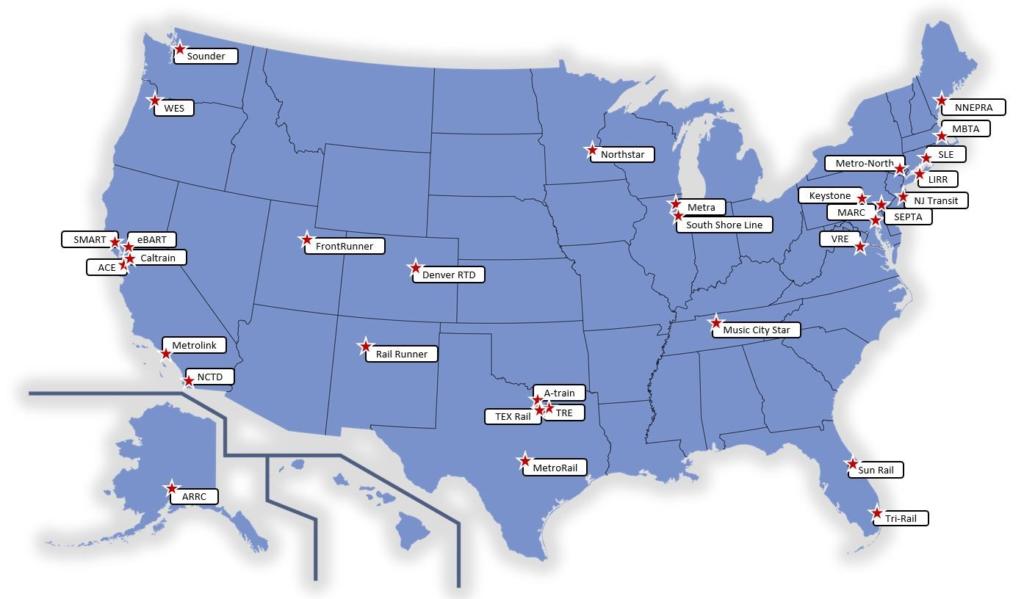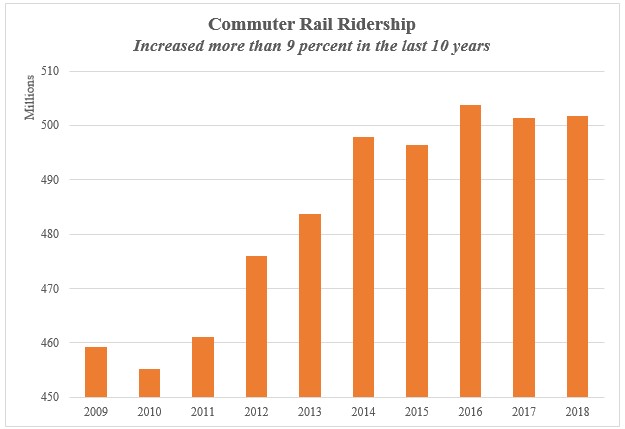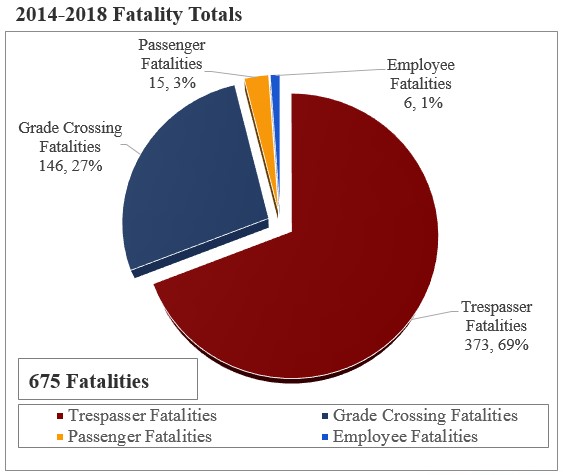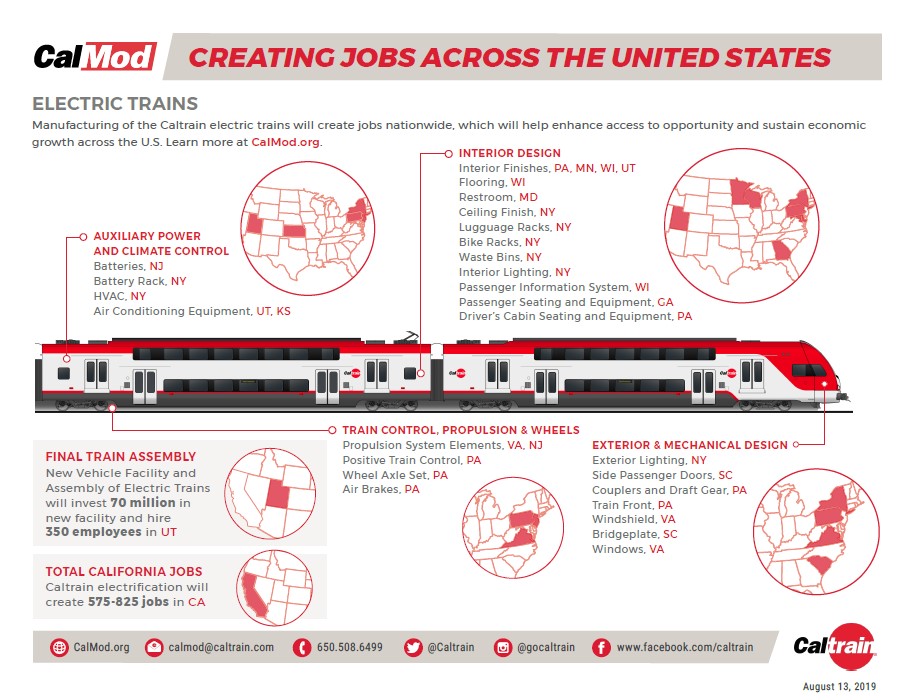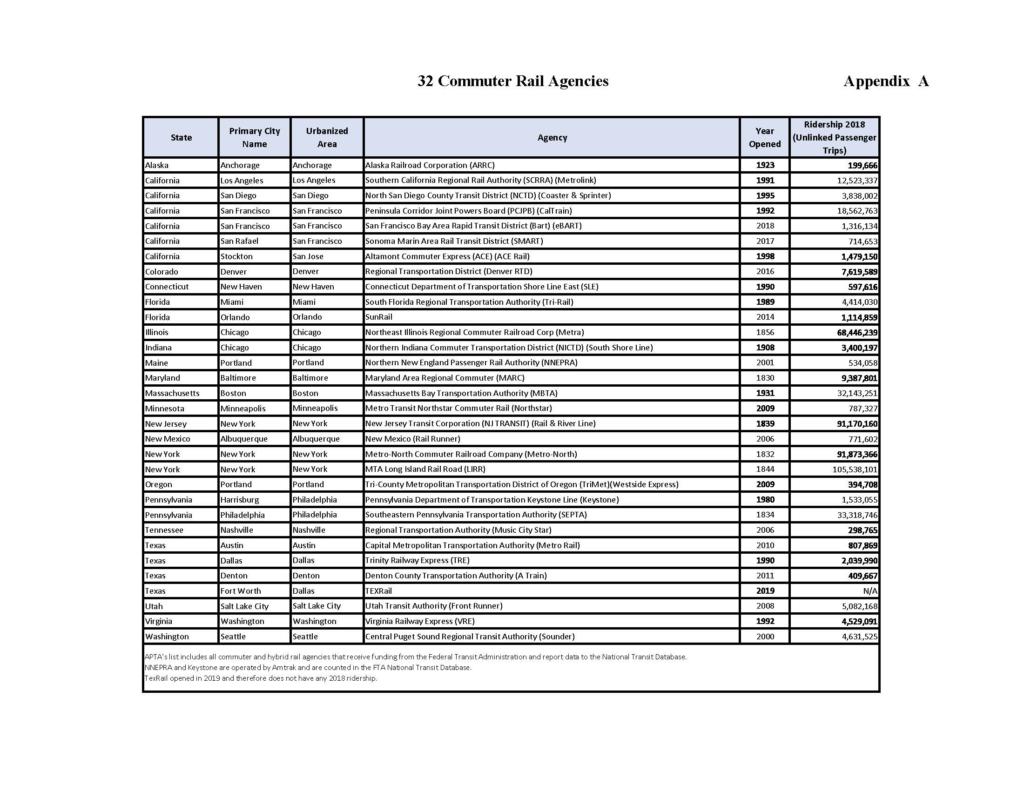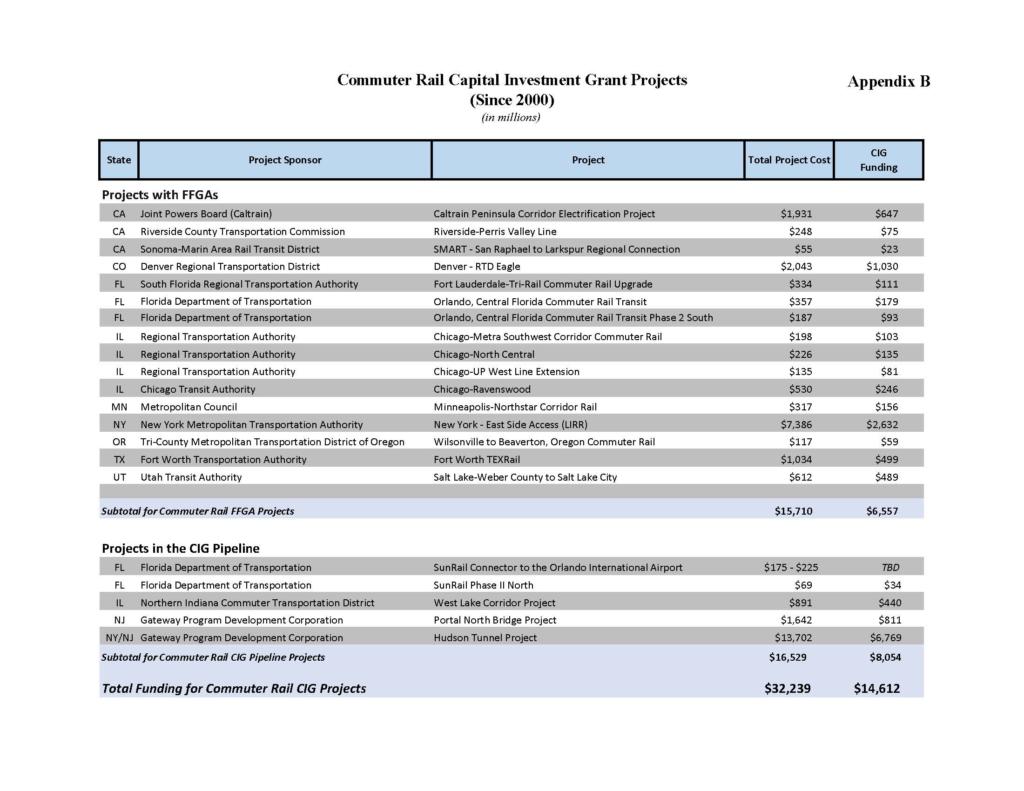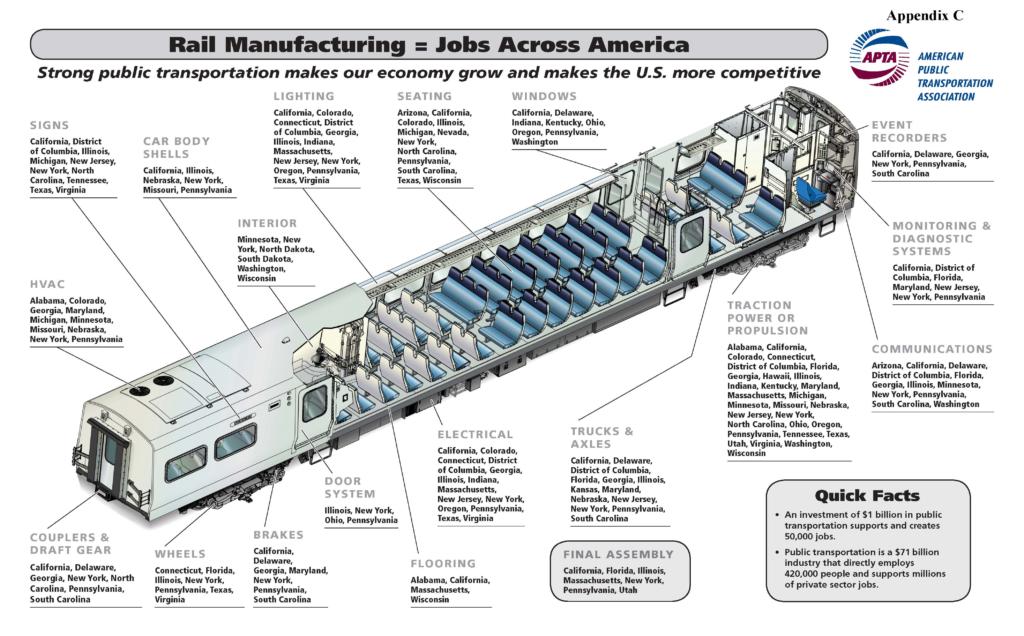Introduction
Chairman Lipinski, Ranking Member Crawford, and Members of the Subcommittee on Railroads, Pipelines, and Hazardous Materials, on behalf of the American Public Transportation Association (APTA) and its 1,500 public- and private-sector member organizations, thank you for the opportunity to testify on “Challenges and Opportunities for Commuter Railroads”.
My name is Paul Skoutelas, and I am the President and Chief Executive Officer (CEO) of APTA, an international association representing a $71 billion industry that employs 430,000 people and supports millions of private-sector jobs. We are the only association in North America that represents all modes of public transportation—bus, paratransit, light rail, commuter rail, subways, waterborne services, and high-performance intercity passenger rail.1
Public transportation not only spurs economic growth, but reduces congestion, improves air quality, saves time and money, and advances an equitable and better quality of life for our communities.
Commuter Rail
Nearly 40 years ago, Congress enacted the Northeast Rail Services Act of 1981(P.L. 97-35) to salvage commuter rail operations from Conrail and created six commuter rail authorities.2 The state of commuter rail at that time suffered from low and declining ridership and equipment long beyond its useful life. These agencies and the many others across the nation that existed then or have started anew have transformed commuter rail into an essential, reliable, growing, safe, and affordable mobility option carrying hundreds of millions of travelers each year.
Today, commuter rail is a $9.9 billion industry, creating and supporting over 200,000 public- and private-sector jobs. Moreover, the overwhelming majority (63 percent) of this funding flows through the private sector.
32 Commuter Rail Agencies
Today, there are 32 agencies operating commuter railroads,3 safely carrying passengers on more than 500 million trips each year. Commuter rail services are higher-speed, higher capacity trains with less frequent stops. They are traditionally used to connect people from suburban areas to city centers. In the last decade, nine new commuter rail systems4 have begun operation, with the latest—TexRail in Fort Worth, Texas—starting up earlier this year.
Commuter Rail Agencies in the United States
Increased Ridership and Fare Recovery
Commuter rail has enjoyed nearly constant annual ridership growth—growing by more than 42 million passenger trips (9.2 percent) over the last decade. Commuter rail has also increased fare recovery (fare revenue as a percent of operating costs) in the last decade. On average, fares recover more than one-half (52 percent) of the operating costs of commuter railroads.
Safety is a Core Value
For commuter rail operators and the entire public transportation industry, safety is a core value—a non-negotiable operating principle and promise to our riders. The men and women responsible for managing and operating public transportation systems are fully committed to the safety of their systems, passengers, employees, and the general public.
As a result of this overriding and sustained commitment to safety, public transportation is the safest form of surface transportation. Every year, 32 commuter railroads across America safely carry passengers on more than 500 million trips. And, traveling by commuter and intercity passenger rail is 18 times safer than traveling by car.
Positive Train Control
Implementation Status
APTA commuter rail members are working to make commuter rail even safer by installing and implementing Positive Train Control (PTC), a complex signaling and communications technology that provides a critical safety overlay on top of already safe commuter rail systems. All of our commuter railroads met the five statutory milestones required to be implemented by December 31, 2018, including acquiring spectrum, installing wayside equipment, installing on-board equipment, back office control set up and workforce training.
Commuter railroads are now focused on PTC implementation and are making great progress. One-fifth of all commuter rail agencies have fully implemented PTC, including Southern California Regional Rail Authority/Metrolink (Los Angeles, CA) and Sound Transit (Seattle, WA), who are testifying before the Subcommittee today.5 Four additional commuter rail agencies have implemented PTC on their railroads but are awaiting final actions from other railroads operating in the territory. The remaining commuter railroads are in revenue service demonstration or field testing and aggressively working to complete PTC implementation by the December 2020 deadline.6
PTC Costs
PTC will cost commuter rail operators approximately $4.1 billion to implement, and almost 90 percent of these costs are being borne by state and local governments and agencies. In addition, PTC will cost an estimated $160 million each year to operate and maintain. For publicly-funded agencies that rely on federal, state, and local funding, as well as passenger fares to operate their service, these costs are staggering.
Moreover, these costs are in addition to the existing $90 billion backlog needed to bring the current public transportation system, including commuter railroads, into a state of good repair, as estimated by the U.S. Department of Transportation. A recent survey of commuter railroad agencies found that many commuter railroads have state-of-good-repair needs that far outweigh their capital budgets, even before including the additional costs associated with implementing PTC. As a result, to fund PTC, commuter railroads have had to divert funds from other critical infrastructure and safety projects, such as replacing bridges (some of which that are more than 100 years old), rehabilitating outdated locomotives, and upgrading tracks and other safety systems.
Although we greatly appreciate Congress’ support for commuter railroads by allowing these railroads to be eligible for Consolidated Rail Infrastructure and Safety Improvements (CRISI) grants for PTC implementation, more investment is needed to ensure that commuter rail agencies can pay for ongoing operation and maintenance costs of PTC, and other critical infrastructure needs.
APTA urges Congress to authorize a total of $1 billion over six years ($160 million per year) under the CRISI program specifically to provide grants to publicly-funded commuter railroads to implement, operate, and maintain PTC.
Highway-Rail Grade-Crossing Safety and Trespassing Issues
Grade-Crossing Safety
Although great progress has been made on PTC, highway-rail grade-crossing safety and trespassing remain significant issues. Over the last five years (2014-2018), 96 percent of commuter railroad fatalities were attributable to trespassers or highway-rail grade-crossing users.
Our commuter railroads have been working hard to mitigate these incidents, often involving unlawful entry to the railroad’s right of way. These incidents cost lives, cause serious injuries and property losses, and result in delays to the traveling public. To address highway-rail grade-crossing hazards, commuter rail agencies are using myriad treatments and technologies, including creating pedestrian crossings, constructing corridor fencing, installing delineators, and placing cameras at crossings and in rail cars. Education is key and many commuter rail agencies have participated in specific campaigns to reduce highway-rail grade-crossing incidents. Engineered solutions are very expensive to construct.
Private sector mapping technology is also critical to combating this significant safety issue. For example, the Metropolitan Transportation Authority, on behalf of the Long Island Rail Road (LIRR) and Metro-North, has partnered with Waze to integrate a railroad crossing warning into its GPS application. The application warns drivers that they are approaching a grade crossing and whether the turn is before or after the crossing along with other traffic and highway information. LIRR and Metro-North upload the grade-crossing data daily to be used in the application.
APTA is encouraged by these individual partnerships with technology companies and welcomes other map navigation developers to work with our industry to add automatic notifications of railroad grade crossings to their maps. There are too many senseless incidents and deaths because cars do not stop at grade crossings or bypass the gates. Navigation developers have created powerful tools for helping us find our way and drive more safely. With their support, we can provide an important tool to warn drivers and prevent needless accidents and deaths.
It will take a collective effort to reduce these grade-crossing incidents. Although we are grateful for Congress’ continued funding of grade-crossing measures under the railway-highway crossings set-aside (23 U.S.C. §130), more needs to be done.
APTA urges Congress to authorize a total of $1.5 billion over six years ($225 million per year) under the CRISI program to provide grants to commuter and other high-performance passenger railroads for highway-rail grade-crossing safety initiatives.
Trespassing on Railroad Properties
Commuter railroads are also addressing the long-standing, critical issue of trespassing on railroad tracks. APTA’s most recent analysis of commuter rail data over the last five years indicate that trespassing remains a major contributing factor to railroad fatalities – nearly 70 percent of rail-related fatalities were as a result of trespassing. Causal factors for trespassing-related fatalities include suicide, direct-route crossing, and general distraction.7 Trespassing issues are complex. Our commuter railroads have partnered with their local communities, mental health care providers, law enforcement, and national organizations to launch educational campaigns about the dangers of trespassing and to develop ways to mitigate these incidents.
APTA and its commuter rail members will continue to be leading advocates to improve railroad and public safety. We urge Congress to do its part by providing the funding that is needed to assist commuter rail in making these important safety investments. In addition, we urge Congress to ensure that the rail statutes and regulations, which are often very prescriptive, do not prevent railroads from introducing new technologies to make our railroads safer.
Federal Investment in Commuter Rail is Critically Needed
We strongly urge Congress to increase federal funding for public transportation, including commuter rail. The federal, state, and local partnership is essential to ensure that critical investments are made to our public transportation systems.
Federal funding through FTA, namely Section 5307 Urbanized Area Formula grants and Section 5337 State of Good Repair grants, provides commuter rail agencies with some assistance but falls short of the federal investment needed. Commuter railroads are also eligible for FTA’s Section 5309 Capital Investment Grants (CIG) program. Since 2000, 16 commuter rail projects have received Full Funding Grant Agreements under the CIG program. In addition, five commuter rail projects, requesting $8 billion, are in the CIG pipeline.8
The economic benefits of these projects reach far beyond the railroad’s specific region. For example, a commuter rail project in Florida may include parts, materials, or equipment from a supplier in Alabama, Arkansas, Georgia, or Wisconsin. These commuter rail projects also represent thousands of construction jobs, manufacturing jobs, and other jobs generated by multiplier effects associated with spending on parts and materials. Appendix C illustrates the jobs created across America in rail car manufacturing.
A good example of the far-reaching economic benefits of investing in commuter rail is the project that the Peninsula Corridor Joint Powers Board is undertaking to modernize its CalTrain commuter rail system. In the San Jose-San Francisco corridor, the Joint Powers Board is investing $1.9 billion (including $647 million of CIG funds) to electrify approximately 51 miles, providing increased service and performance improvements to the communities along this commuter route.9 However, the benefits of this project are felt nationwide. For instance, the electric train manufacturer (Stadler Rail) constructed a new facility with 350 employees in Utah to build the train sets and components and parts are being manufactured in 12 different states.
Moreover, after a new commuter line is constructed and operational, there are ongoing,
permanent economic growth and development impacts enabled by the transportation improvements and associated economic productivity gains. Investment in commuter rail is critical to ensuring that it can continue to spur economic growth, reduce congestion, and connect people to their jobs and communities.
Surface Transportation Authorization Recommendations
Over the past 18 months, APTA has solicited input from our diverse membership on priorities for the Surface Transportation Authorization Act. At our Legislative Committee meeting on June 23, 2019, members unanimously approved APTA’s surface transportation authorization recommendations, which include proposals for commuter and high-performance intercity passenger rail. In October, APTA’s Board of Directors will consider these recommendations for final approval.
APTA strongly urges the Committee to invest $145 billion over six years in public transportation and fund critical projects that will repair, maintain, and improve our public transit systems (including commuter rail) today and in the future. Our proposal, which includes $112 billion for Urbanized Area Formula, State of Good Repair, and CIG grants, would address the entire state-of-good-repair backlog and fund all CIG projects in the pipeline in the next six years.
Along with this increased funding, APTA recommends that the Committee conduct a zero-based review of the CIG program to assess all statutory, regulatory, and other administrative requirements. We have previously testified that the bureaucratic maze that project sponsors, including commuter railroads, must adhere to is costly and burdensome.
Finally, APTA calls on the Committee to create a Passenger Rail Trust Fund funded in part with new, long-term, dedicated revenues to significantly increase passenger rail investment to $32 billion over six years. This investment would include $7.1 billion for CRISI grants.
As noted above, more investment is needed to ensure that commuter rail agencies can pay for ongoing operation and maintenance costs of PTC and mitigate grade-crossing incidents. APTA urges the Committee to expand the eligibility of the CRISI grant program to commuter rail to provide funding for:
- Operations and maintenance of PTC ($160 million per year/$1 billion over six years); and
- Passenger Rail-Highway Grade Crossing Grants ($250 million per year/$1.5 billion over six years).
Congress must provide the necessary, dedicated funding to ensure safe, reliable, and efficient commuter rail systems.
Conclusion
On behalf of APTA, thank you for giving me the opportunity to testify and share our thoughts on Challenges and Opportunities for Commuter Railroads. We look forward to working with the Committee on Transportation and Infrastructure as it writes the next Surface Transportation Authorization Act. It is imperative that we make meaningful investments in commuter rail to enable these critical services to continue to grow, serve our communities, and contribute to the national economy.



